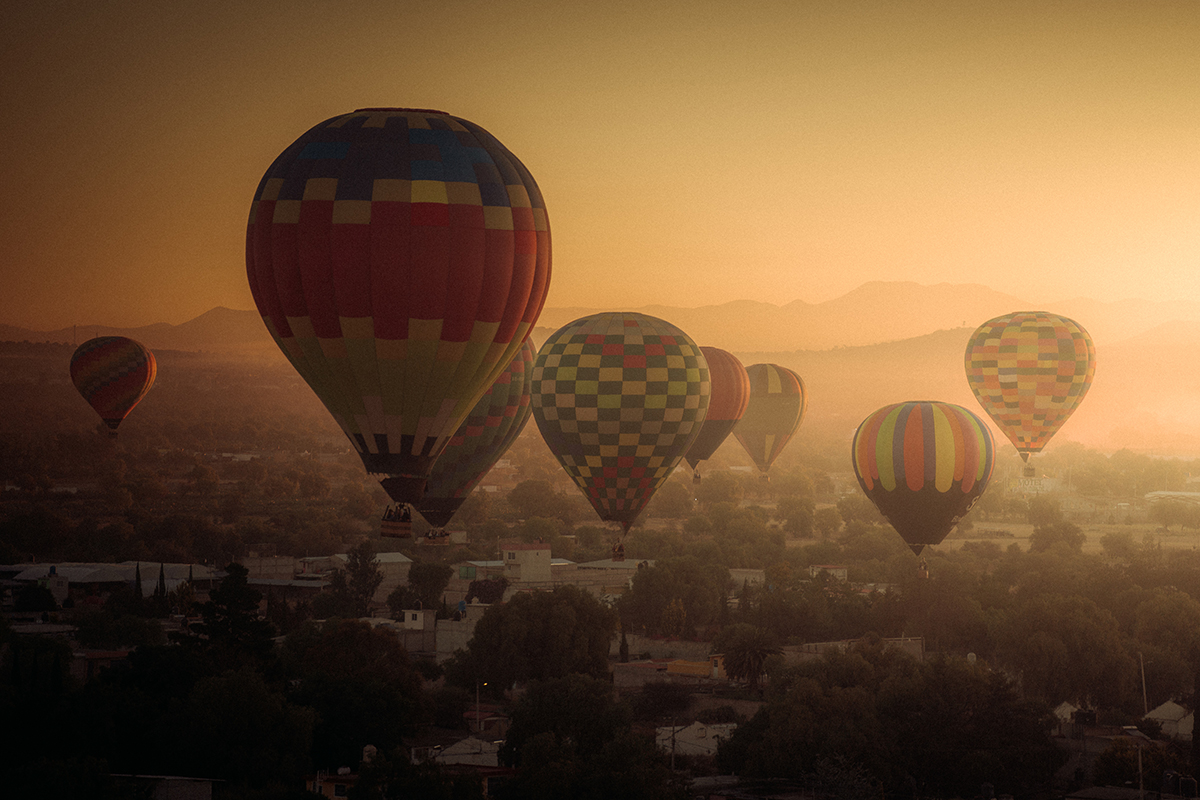On the Road With a Fast-Aperture Zoom
Ivan Meneses captures event photos around the world with his Tamron 35-150mm F/2-2.8 VXD lens.
Share the article:
More Photo Tips | Video Gallery | Photo Gallery | Enewsletter sign-up
By Jenn Gidman
Images by Ivan Meneses
At age 15, Ivan Meneses was drawn into the world of DJing, a perhaps unsurprising move for a teenager who loved music. The more Ivan arranged his own events, however, the more he realized he wanted to be able to create his own flyers and other promotional materials. “That led me down the path of graphic design and photography, and once I left the DJing world in my early 20s, I dove more fully into photography,” he says.
Today, Ivan runs AI Visuals, focusing on event and music fest photography and videography around the world, specifically in the electronic dance music space. “Not counting the peak of the pandemic, we usually attend 60 festivals or so a year, including internationally,” he says. “We also go on tour with artists. In fact, I’m about to head out soon for a tour that’s headed to Saudi Arabia, Singapore, and Thailand.” Ivan’s musical background enables him to seamlessly sync up audio to imagery when required, resulting in a high-energy package that captures special moments in time.
In seeking out scenes to photograph, Ivan is always scouting for a different angle. “I don’t follow a trend when it’s happening,” he says. “If something is creatively interesting and I feel the urge to photograph it, that’s fine, but I won’t just take pictures of a place or thing because other people are. If I’m in a place I’ve photographed before, I’ll try to shoot it completely differently than I did previously—maybe switching up my composition or how I position my subjects.”
Ivan also tries to ensure his photography stays the star, not his own name. “AI Visuals has been my brand identity for a long time,” he says. “It’s kind of like the artist Banksy. He wants you to look at his art, not him. I feel the same way. I like that hidden aesthetic, where I just keep the personal side of me mysterious.”
The Tamron 35-150mm F/2-2.8 Di III VXD standard zoom lens has become one of Ivan’s go-to lenses when he’s on the road. “I don’t say this lightly, but this is the best lens I’ve ever owned,” he says. “You can’t beat the 35-150 for the type of work that I do. It’s got a wide focal-length range that’s right in my sweet spot for how I like to take pictures, and being able to drop down to F/2 for a lens of that range is wild. The 35-150 is ridiculously sharp and has incredible, quick focusing. In my line of work, the visuals are constantly changing, especially when people are performing onstage, and the 35-150 does a terrific job of sticking with a focus point and not constantly hunting.”
The 35-150mm is also an ideal travel lens, thanks to that versatility and its compact design. “I can capture so many different types of images without ever having to switch lenses,” Ivan says. “When I went on a hot-air balloon tour in Mexico City, this lens allowed me to shoot such a varied selection of images. Hundreds of balloons are moving around you as you coast along in your own balloon, so having the ability to zoom in and out and compress certain scenes was very useful.”
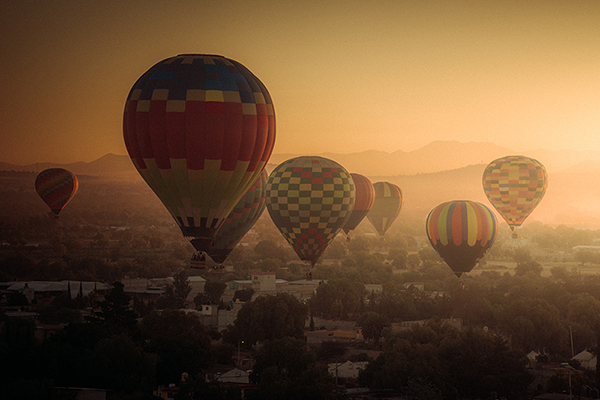
35-150mm (135mm), F/2.8, 1/640 sec., ISO 100
Click image to view larger
That versatility also means Ivan doesn’t have to bring as many lenses with him as he used to. “The gear I’m carrying around now is so minimal,” he says. “Not only does that reduce the strain on my back when I’m going on all-day excursions, it’s also important for overall travel requirements. Some airlines have stricter weight limits than others. And if you go on certain day trips, you’re hit with similar weight restrictions. I wasn’t even allowed to bring a camera bag on the hot-air balloon—only what I could carry. So I brought my camera with the 35-150mm and shoved another wider lens in my pocket.”
IVAN’S QUICK TIPS
• Take pictures of the outside from inside.
You don’t have to be on a photo tour to get great shots—you can even capture images from your hotel. Don’t be intimidated at shooting through windowpanes. Use a low f-stop, push the lens as close as you can to the glass, and then cover the surrounding area of it with a hat, shirt, or section of the curtain—something dark so you don’t get any reflections. Then hold your breath to stay as steady as possible while you take the picture. That’s what I did here for this photo of a cityscape of Mexico City, which I spotted out the window as I was waiting for the elevator.
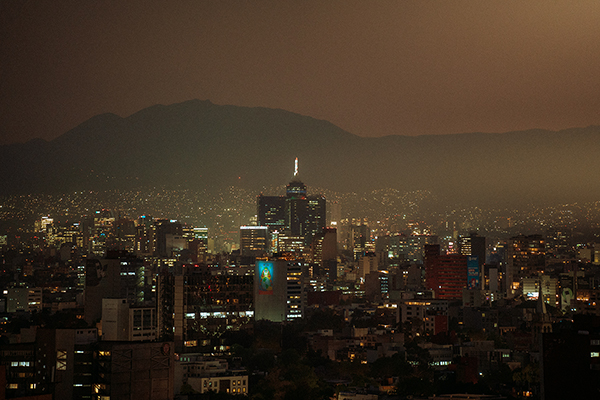
35-150mm (150mm), F/2.8, 1/20 sec., ISO 2500
Click image to view larger
• Foresee the shot before it happens.
A lot of images you can’t plan ahead of time—they’re in the moment. But thanks to my background in the music industry, where I’m often able to hear when something big is about to go down, I’ve come to realize there are some photos you can preplan for.
Take the picture here with the various hot-air balloons floating over the Pyramid of the Sun near Mexico City. They seem like they’re moving slowly in the sky, but they actually move quite fast from a photographic standpoint, especially when they’re moving in opposite directions. The one balloon that’s closest to me was at one point right in front of me, blocking all of the others. But I knew if I waited for it to move out of the way, I’d be able to capture a photo with some depth, as some balloons would be close and some far away. That’s exactly what happened.
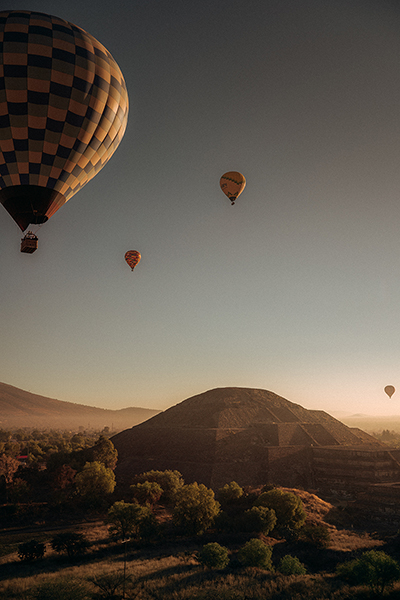
35-150mm (35mm), F/4.5, 1/1250 sec., ISO 100
Click image to view larger
• ‘Fave’ your photos.
This is something I do a lot at events, to save time on the back end. I set up my Sony camera to rate the pictures I take in-camera; I have a hot button that allows me to put a star on photos that I know, as soon as I take them, that they’re probably keepers. That way, I’ve already started thinking about how I’m going to edit those photos, and when I eventually sit down in front of my computer, I often know just what I need to do without having to start from scratch going through hundreds of images. It’s a huge time-saver.
• If the light isn’t coming in the way you want, make it happen in post.
Sometimes I have to “drag the light in” during the editing process, so that the viewer is looking where I want them to look. That was the case for this Jeep shot in the Alabama Hills of California, taken right after sunset during the blue hour. The light you see coming in from the left was from another car that was approaching, but I wanted to accentuate the light in the sky to sync up with that. The sunset was actually taking place on the right, but I created a Radial Filter in Lightroom on the left side of the frame and increased the exposure in that section, so that it looks like the light from the sunset was coming in from the left.
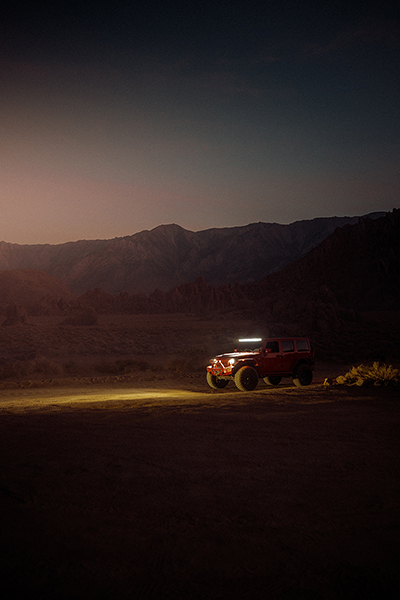
35-150mm (35mm), F/2, 1/30 sec., ISO 640
Click image to view larger
I did the same with the photo taken in Muir Woods National Monument, a park in Marin County, California. I was walking along this gorgeous path through the redwood forest, a spot I love for taking pictures. It was cloudy that day, though, with very soft, neutral lighting in the original photo. I decided to add a lot more vignette to the bottom of the image, and to the right and left of the center of the frame. On the path itself, once more using a Radial Filter, I added more light further down the path as it traveled deeper into the image, to help lead the viewer’s eye into the picture. It’s a visual trick I use often!
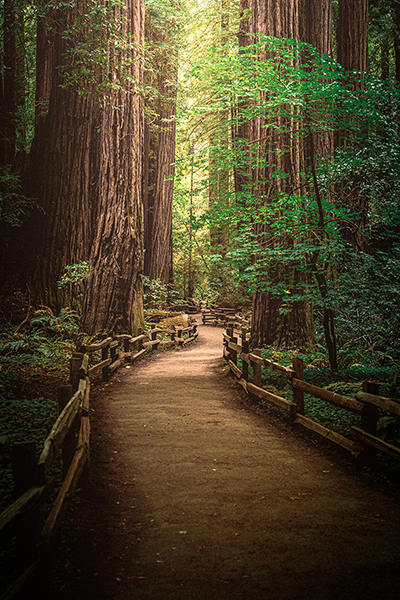
35-150mm (35mm), F/2.8, 1/80 sec., ISO 1000
Click image to view larger
To see more of Ivan Meneses’ work, check out his website and Instagram.
More Photo Tips | Watch Videos | Learn More About Tamron Lenses | Photo Gallery
